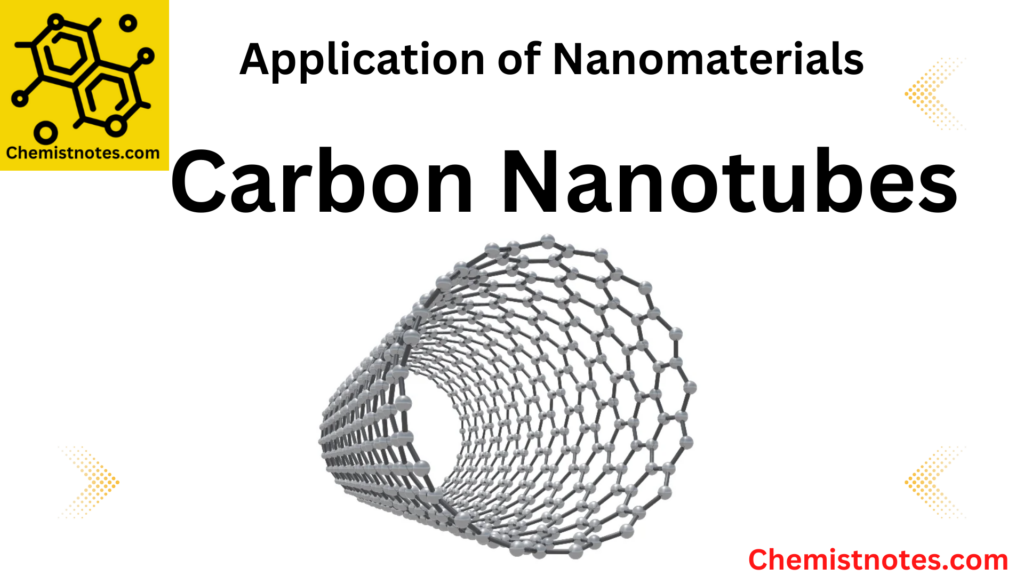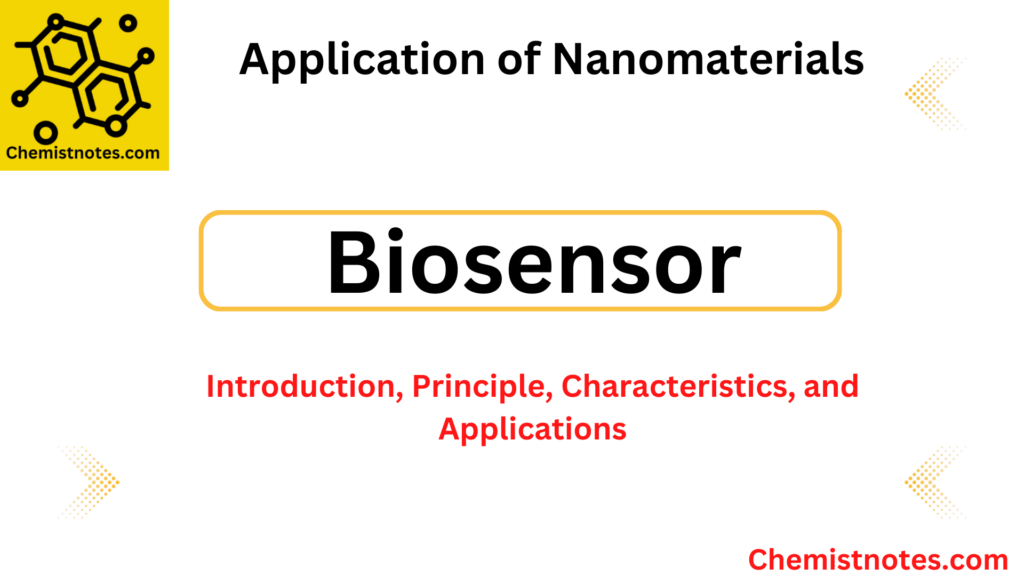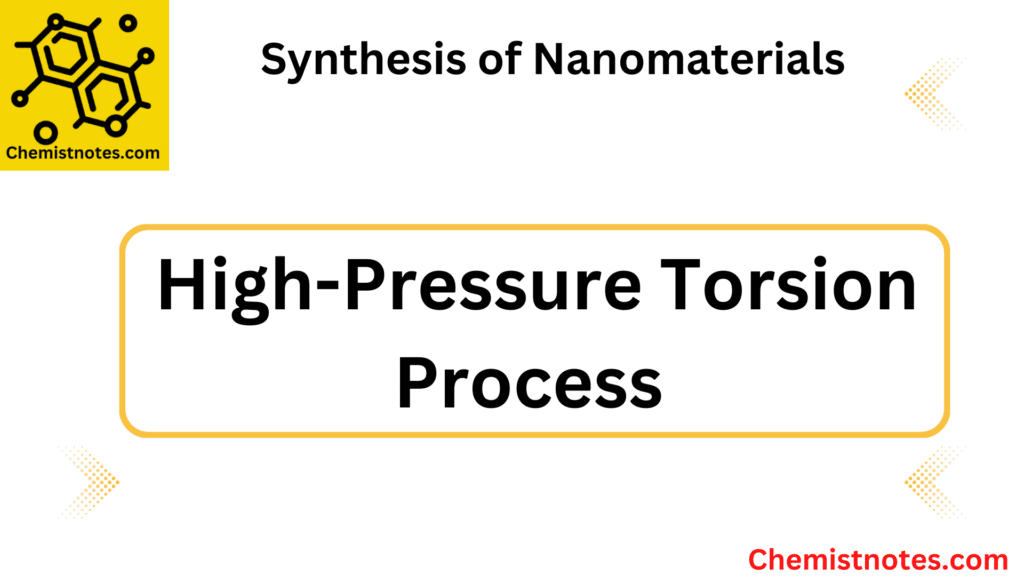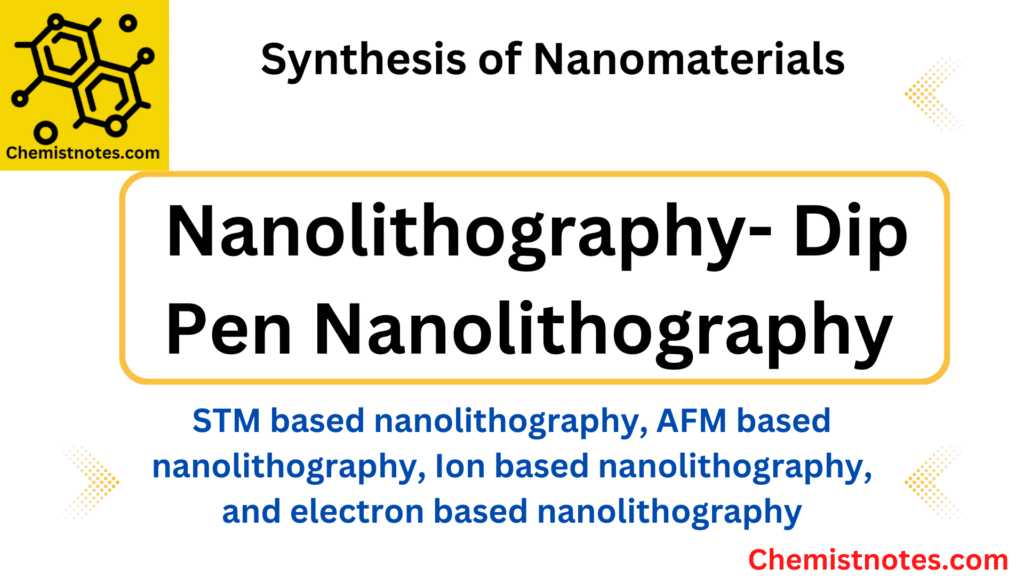Table of Contents
ToggleEqual channel angular pressing (ECAP), also known as equal channel angular extrusion (ECAE), is a materials processing technique for the preparation of nanocrystalline and ultrafine-grained metals and alloys. Nanometer dimensions are generated by the application of an ultrahigh plastic strain on bulk materials or polycrystalline material. It is a top-down nanomaterials synthetic approach.
Equal channel angular pressing process
In this process, nanosized grains are produced by repeated pressing of materials through a die containing two channels that meet each other at an angle. Simply by repeated pushing of material through the die with the help of a plunger, creates typical grains between 300-600 nm. ECAP involves simple instrumentation consisting of one plunge and a die along with load recording and deformation control units. Die design is a crucial part of the ECAP which is affected by Φ and Ψ angles.
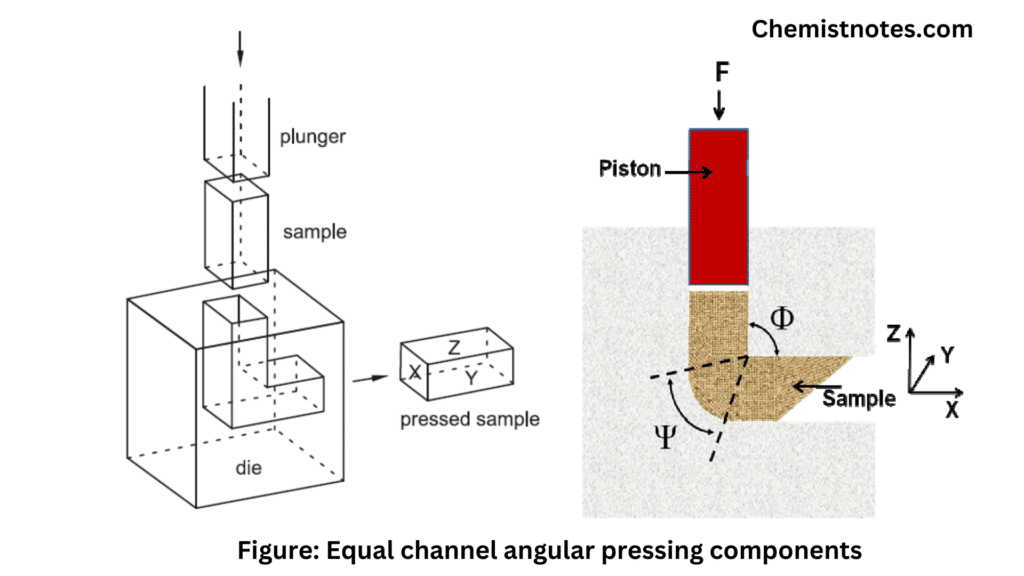
The internal channel of the die seen in the figure above is abruptly bent via a 90° φ angle, and the Figure also illustrates another angle, ψ, equal to 0°, which depicts the outside arc of curvature where the two channels intersect. During this procedure, a plunger is used to press a rod-shaped sample through the die. While the sample travels through the die, shear deformation takes place. Even though there is a lot of strain applied when the sample moves across the shear plane, the sample eventually exits the die with its cross-sectional dimensions unchanged.
Researchers all over the world are now studying the ECAE (equal channel angular extrusion) process as it is easy to install and does not require special equipment in laboratories, except for the dies and a press machine. The ECAE or ECAP method has been successfully used to produce ultrafine grain (UFG) microstructures in a variety of metals and alloys. The trials for steels, however, are limited, and the main materials employed are light metals like Al- and Mg-alloys.
Factors affecting equal channel angular pressing
The major factors that affect material processing are lubrication, pressing temperature, pressing parameters, and die geometry. Synthetic greases based on MoS2 are universal lubricants for ECAP. When pressing is carried out at high temperatures, excess lubricants should be removed to minimize the fume formation that can contaminate the whole sample. The lowest possible temperature is recommended in order to avoid dynamic recovery. Ductile materials like aluminum (Al) and Copper (Cu) can easily be operated at room temperature whereas hard materials may need high temperatures. Similarly, Ti and Ti alloys may need some moderate temperature for effective equal channel angular pressing.
Advantages of equal channel angular pressing
- Ability to scale up or process large samples
- Increases the mechanical properties of metals like Al and its alloy
- Reduction of grain sizes by severe plastic deformation (major advantages)
- Reduction level of contamination
- Elimination of consolidation step
- An ECAP process is simple to set up and operate.
Disadvantages of equal channel angular pressing
The major disadvantage is that equal channel angular pressing requires strong extrusion forces and appropriately technologically plastic materials.
Equal Channel Angular Pressing Video
References
- Snopiński, P., Król, M., Pagáč, M. et al. Effects of equal channel angular pressing and heat treatments on the microstructures and mechanical properties of selective laser melted and cast AlSi10Mg alloys. Archiv.Civ.Mech.Eng 21, 92 (2021). https://doi.org/10.1007/s43452-021-00246-y
- Hiroaki Nakano, Satoshi Oue, Seiji Taguchi, Shigeo Kobayashi, and Zenji Horita, “Stress-Corrosion Cracking Property of Aluminum-Magnesium Alloy Processed by Equal-Channel Angular Pressing”, Internation Journal of corrosion, 2012, 1-8, (2012).
- Cui, Lang, Shengmin Shao, Haitao Wang, Guoqing Zhang, Zejia Zhao, and Chunyang Zhao. 2022. “Recent Advances in the Equal Channel Angular Pressing of Metallic Materials” Processes 10, no. 11: 2181. https://doi.org/10.3390/pr10112181


